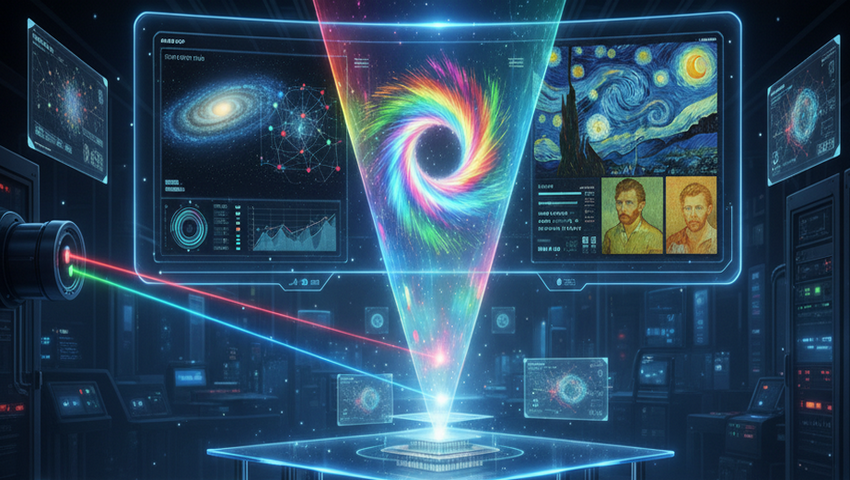
Researchers at the University of California, Los Angeles (UCLA) have introduced optical generative models, a new paradigm for AI image generation that leverages the physics of light rather than conventional electronic computation. This approach offers a high-speed, energy-efficient alternative to traditional diffusion models while achieving comparable image quality.
Modern generative AI, including diffusion models and large language models, can produce realistic images, videos, and human-like text. However, these systems demand enormous computational resources, driving up power consumption, carbon emissions, and hardware complexity. The UCLA team, led by Professor Aydogan Ozcan, took a radically different approach: they generate images optically, using light itself to perform computations.
The system integrates a shallow electronic encoder with a free-space reconfigurable diffractive optical decoder. The process begins with random noise, which is quickly translated by the digital encoder into complex 2D phase patterns – dubbed “optical generative seeds.” These seeds are then projected onto a spatial light modulator (SLM) and illuminated by laser light. As this modulated light propagates through a static, pre-optimized diffractive decoder, it instantly self-organizes to produce an entirely new image that statistically adheres to a desired data distribution. Crucially, unlike digital diffusion models that might necessitate hundreds or even thousands of iterative denoising steps, this optical process generates a high-quality image in a single “snapshot.”
The researchers validated their system across diverse datasets. The optical models successfully generated novel images of handwritten digits, butterflies, human faces, and even Van Gogh-inspired artworks. The outputs were statistically comparable to those produced by state-of-the-art digital diffusion models, demonstrating both high fidelity and creative variability. Multi-color images and high-resolution Van Gogh-style artworks further highlight the approach’s versatility.
The UCLA team developed two complementary frameworks:
- Snapshot optical generative models generate images in a single illumination step, producing novel outputs that statistically follow target data distributions, including butterflies, human faces, and Van Gogh-style artworks.
- Iterative optical generative models recursively refine outputs, mimicking diffusion processes, which improves image quality and diversity while avoiding mode collapse.
Key innovations include:
- Phase-encoded optical seeds: a compact representation of latent features enabling scalable optical generation.
- Reconfigurable diffractive decoders: static, optimized surfaces capable of synthesizing diverse data distributions from precomputed seeds.
- Multicolor and high-resolution capability: sequential wavelength illumination allows RGB image generation and fine-grained artistic outputs.
- Energy efficiency: optical generation requires orders of magnitude less energy than GPU-based diffusion models, particularly for high-resolution images, by performing computation in the analogue optical domain.
This flexibility allows a single optical setup to tackle multiple generative tasks simply by updating the encoded seeds and pre-trained decoder, without altering the physical hardware.
Beyond speed and efficiency, optical generative models offer built-in privacy and security features. By illuminating a single encoded phase pattern at different wavelengths, only a matching diffractive decoder can reconstruct the intended image. This wavelength-multiplexed mechanism acts as a physical “key-lock,” enabling secure, private content delivery for applications like anti-counterfeiting, personalized media, and confidential visual communication.


